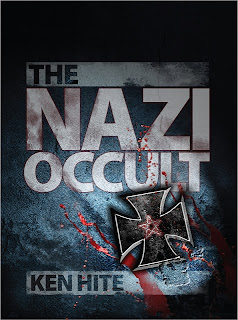Looking for some cool, handmade dicebags to move your dice from place to place? Look no further than +Michael Althauser and Greyed Out Productions. You can order through their Etsy store, or contact Michael for custom orders. Michael sent a couple of his bags to me to review, and I have to say that I am impressed.
First, some pictures of the bags...
The bags that I received were the Dungeon Map Bag and the Dwarven Anvil Mini Bag. Both bags are made of good quality fabric. The Dungeon Map Bag was lined with suede, while the Dwarven Anvil was lined with a linen material. I'm not sure if the camera on my cell phone does them justice because these are some really good dice bags. The stitching is strong, straight (a very important quality to stitching I am told), and the cords will definitely hold a bag full of dice.
Of course, the first thing that I did was fill them with dice, so we could get some dice porn...I mean see how they look. To help demonstrate the sizes of the bags, I put the same dice into both bags.
I was able to fit two full sets of dice, two sets of Fudge dice, and an assortment of percentile, d20s, odds and ends dice and my hit location die into both of the bags. I was also able to put my Fudge dice bag (with six sets of Fudge dice in it) on top of the Dungeon Map bag and even close the bag.
I really like these dice bags. The Dungeon Map bag will become my new dice bag of choice, and it is good for traveling. I then crammed the rest of my dice that weren't in the Dungeon Map bag into the Dwarven Anvil bag, and it took the durability test like a trouper. This bag is coming with me on my trip to Las Vegas next week, which will give me a great chance to check out its durability.
Now, the Dungeon Map Bag is $20 and the Dwarven Anvil mini bag is $13.99 (plus shipping). Would I pay for these dice bags? Hell yes. To be honest, I've used the same old dice bag that I got back in college in the 80s, and it has really seen better days. Every gamer needs dice bags, and these are stylish and very well made. Go to the link at the beginning of this post for the Etsy store, or contact Michael through G+ (I linked his Google+ profile at the beginning of the post as well). Order a bunch of bags and tell them that the Dorkland! blog sent you!
First, some pictures of the bags...
The bags that I received were the Dungeon Map Bag and the Dwarven Anvil Mini Bag. Both bags are made of good quality fabric. The Dungeon Map Bag was lined with suede, while the Dwarven Anvil was lined with a linen material. I'm not sure if the camera on my cell phone does them justice because these are some really good dice bags. The stitching is strong, straight (a very important quality to stitching I am told), and the cords will definitely hold a bag full of dice.
Of course, the first thing that I did was fill them with dice, so we could get some dice porn...I mean see how they look. To help demonstrate the sizes of the bags, I put the same dice into both bags.
I was able to fit two full sets of dice, two sets of Fudge dice, and an assortment of percentile, d20s, odds and ends dice and my hit location die into both of the bags. I was also able to put my Fudge dice bag (with six sets of Fudge dice in it) on top of the Dungeon Map bag and even close the bag.
I really like these dice bags. The Dungeon Map bag will become my new dice bag of choice, and it is good for traveling. I then crammed the rest of my dice that weren't in the Dungeon Map bag into the Dwarven Anvil bag, and it took the durability test like a trouper. This bag is coming with me on my trip to Las Vegas next week, which will give me a great chance to check out its durability.
Now, the Dungeon Map Bag is $20 and the Dwarven Anvil mini bag is $13.99 (plus shipping). Would I pay for these dice bags? Hell yes. To be honest, I've used the same old dice bag that I got back in college in the 80s, and it has really seen better days. Every gamer needs dice bags, and these are stylish and very well made. Go to the link at the beginning of this post for the Etsy store, or contact Michael through G+ (I linked his Google+ profile at the beginning of the post as well). Order a bunch of bags and tell them that the Dorkland! blog sent you!






































